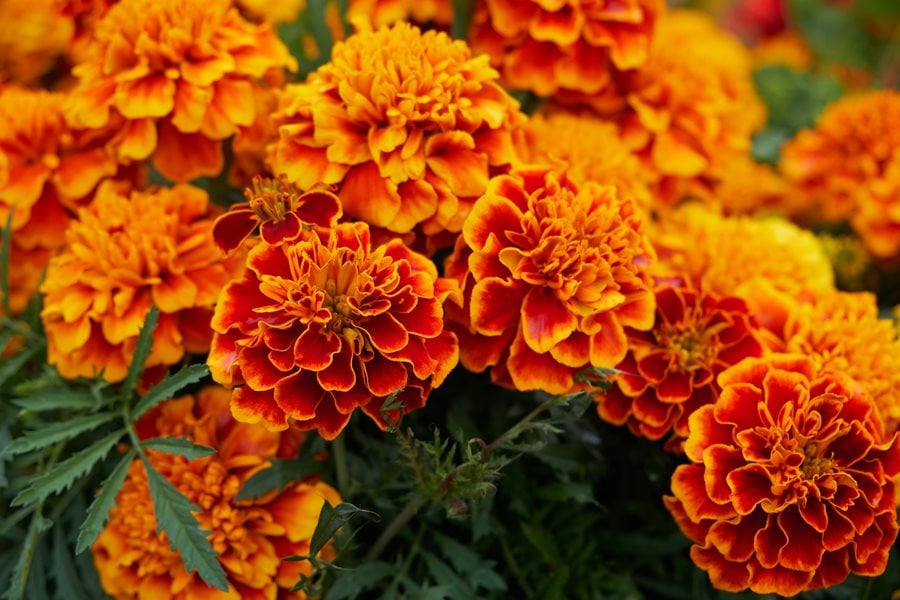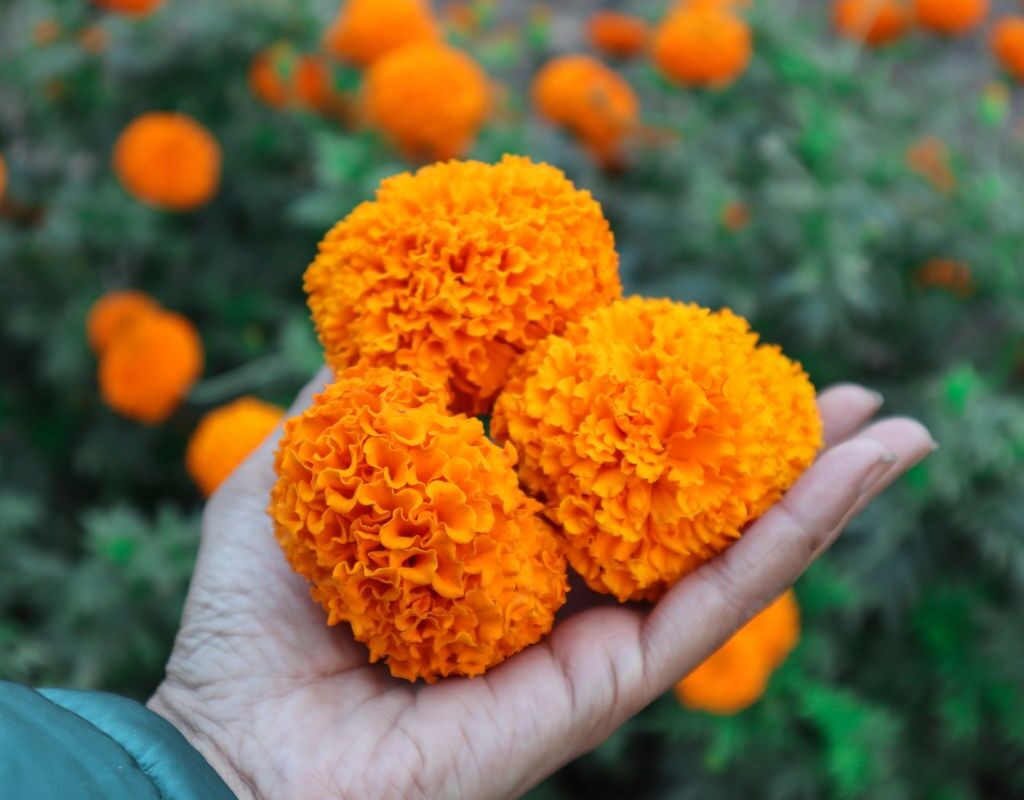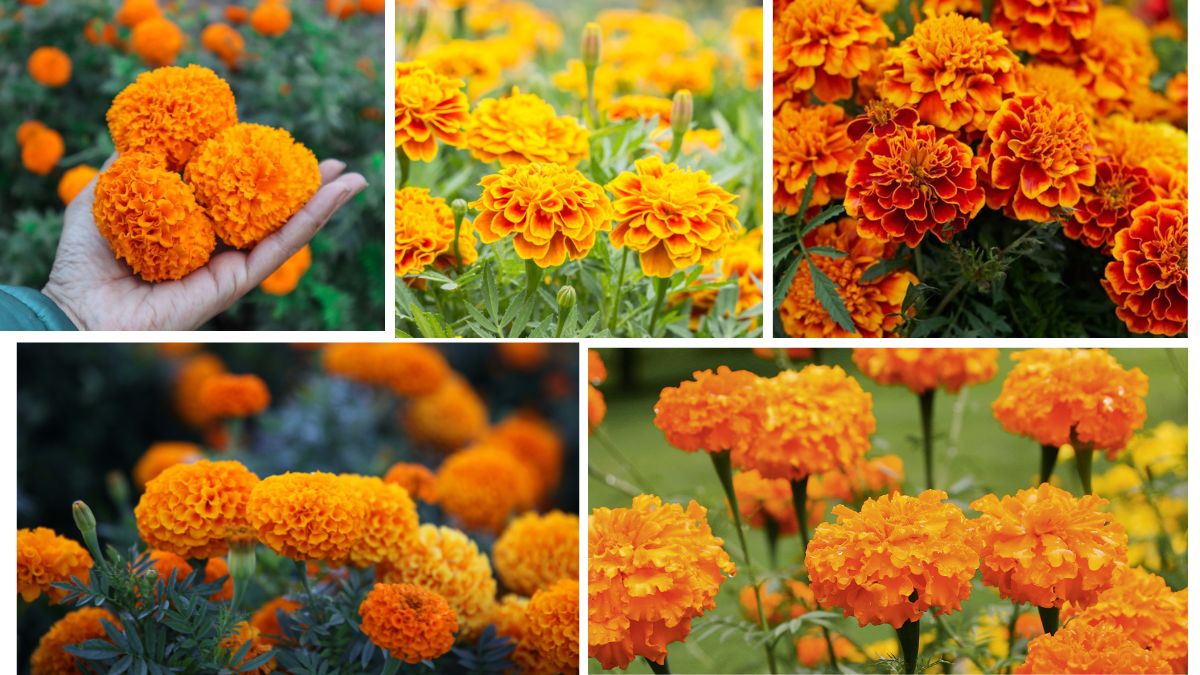Marigolds, with their vibrant golden hues and cheerful blooms, are among the easiest and most rewarding flowers to grow. Beloved for their pest-repelling properties and low-maintenance nature, marigolds are the go-to plant for gardeners seeking beauty, simplicity, and a sunny touch in their flower beds or vegetable patches.
Whether you’re planting them in pots, borders, or veggie gardens, marigolds can thrive with just a little care and sunshine. This guide shares simple sunny tips for growing marigolds successfully—covering everything from choosing varieties to boosting blooms and keeping your plants healthy all season long.
Why Choose Marigolds?

Before diving into how to grow them, let’s understand why marigolds are garden favorites:
- Bright, sunny colors ranging from yellow to deep orange and red
- Long blooming season, typically from spring until frost
- Natural pest deterrents—especially against aphids and nematodes
- Easy to grow from seed and perfect for beginners
- Tolerant of poor soil and drought conditions
With these benefits, marigolds are ideal for both ornamental gardens and vegetable patches.
1. Choose the Right Marigold Variety
There are three main types of marigolds commonly grown in home gardens:
African Marigolds (Tagetes erecta)
- Tallest variety (1 to 3 feet tall)
- Large, pom-pom-shaped blooms
- Best for sunny borders and large containers
French Marigolds (Tagetes patula)
- Compact, bushy plants (6 to 12 inches tall)
- Single or double flowers with ruffled petals
- Excellent for edging, containers, or companion planting
Signet Marigolds (Tagetes tenuifolia)
- Small plants with delicate, daisy-like flowers
- Lacy foliage and citrus-scented leaves
- Great for herb gardens or mixed flower beds
Pro Tip:
For pest control in veggie gardens, French marigolds are most effective. For ornamental displays, African marigolds offer maximum visual impact.
2. Select a Sunny Spot

Marigolds thrive on sunlight—the more, the better. A location that receives 6 to 8 hours of direct sunlight daily will ensure healthy growth and vibrant blooms.
Best Places to Plant:
- Along sunny borders
- In vegetable garden rows
- In balcony planters or window boxes
- In containers on patios or decks
Avoid shaded or damp areas, which can encourage mold and reduce flowering.
3. Prepare Well-Draining Soil
Marigolds are not fussy, but they do best in loose, well-drained soil with moderate fertility.
Soil Prep Tips:
- Mix in compost or organic matter to improve drainage and nutrient levels.
- Avoid overly rich soil, which promotes leafy growth at the expense of flowers.
- Maintain a soil pH between 6.0 and 7.0.
If you’re planting in containers, use a lightweight potting mix to prevent waterlogging.
4. Sow or Transplant at the Right Time

From Seeds:
- Direct sow seeds after the last frost date in your area.
- Sow them 1/4 inch deep, spacing them 8–12 inches apart depending on variety.
- Thin seedlings as needed once they sprout (typically within 5–7 days).
From Transplants:
- Start seeds indoors 4–6 weeks before the last frost.
- Transplant hardened-off seedlings outdoors when the weather is warm and stable.
Marigolds grow fast—expect blooms within 45–60 days from seed!
5. Watering: Keep It Balanced
Marigolds are drought-tolerant once established but still benefit from consistent watering.
Watering Tips:
- Water deeply but infrequently—about once or twice a week.
- Avoid overhead watering to prevent fungal issues.
- Let the soil dry slightly between waterings.
- In containers, check soil daily, especially in hot weather.
Too much moisture can lead to root rot, so always ensure proper drainage.
6. Fertilize Sparingly

Unlike heavy feeders like roses or vegetables, marigolds don’t require much fertilizer.
Feeding Tips:
- Mix balanced compost into the soil at planting.
- For long-term blooms, apply a diluted all-purpose liquid fertilizer once a month.
- Avoid high-nitrogen fertilizers—they encourage leafy growth, not flowers.
In rich soil, marigolds often don’t need extra feeding at all!
7. Deadhead for Continuous Blooms
One of the best ways to keep marigolds blooming all season is deadheading—the simple act of removing spent flowers.
Deadheading Steps:
- Pinch or snip off faded blooms with your fingers or pruning shears.
- Regular deadheading encourages the plant to produce more flowers instead of seeds.
- For bushier plants, trim leggy stems by 1/3 mid-season.
Consistent deadheading can keep your marigolds vibrant from early summer through the first frost.
8. Control Pests and Diseases Naturally

Marigolds are famous for repelling insects, but they can occasionally fall victim to pests or diseases themselves.
Common Problems:
- Aphids – Spray with soapy water or neem oil.
- Spider mites – Control with regular misting and insecticidal soap.
- Powdery mildew or leaf spot – Ensure good air circulation and avoid wetting the foliage.
Companion Planting Bonus:
Planting marigolds near tomatoes, beans, squash, or peppers helps deter:
- Nematodes
- Whiteflies
- Beetles
9. Use Marigolds in Creative Garden Designs
Marigolds are incredibly versatile. Use them to brighten up beds, borders, and even edible gardens.
Creative Ideas:
- Edge flower beds with short French marigolds for a colorful border.
- Mix African marigolds with sunflowers and zinnias for a bold summer bouquet.
- Interplant marigolds between vegetables to serve as natural protectors.
- Grow signet marigolds in herb gardens—they’re edible and add citrus flavor to salads!
10. Harvest Seeds to Replant Next Season
Marigolds are annuals, but you can enjoy them year after year by saving their seeds.
Seed Saving Guide:
- Wait until the flowers dry on the plant and the seed heads turn brown.
- Snip off the heads and let them dry for a few more days.
- Separate the black seeds from the chaff.
- Store in a cool, dry place in a labeled envelope or jar.
Saving seeds is not only budget-friendly but also encourages pollination and biodiversity in your garden.
Bonus Tip: Try Growing Edible Marigolds
Not all marigolds are edible, but signet marigolds (Tagetes tenuifolia) produce flowers that are safe and flavorful.
Use edible petals:
- In salads
- As garnish
- Infused in teas
Their zesty, lemony flavor adds a surprising twist to dishes—and brings a whole new purpose to your marigold patch.
Final Thoughts
Marigolds are the perfect flowers for gardeners seeking a low-maintenance, high-impact plant. Their brilliant blooms, sunny disposition, and pest-fighting powers make them one of the best companions in any garden.
By choosing the right variety, giving them full sun, and following these simple sunny tips, you’ll enjoy months of color, joy, and garden benefits. Whether you’re growing them for beauty, utility, or both—marigolds are a golden choice.



